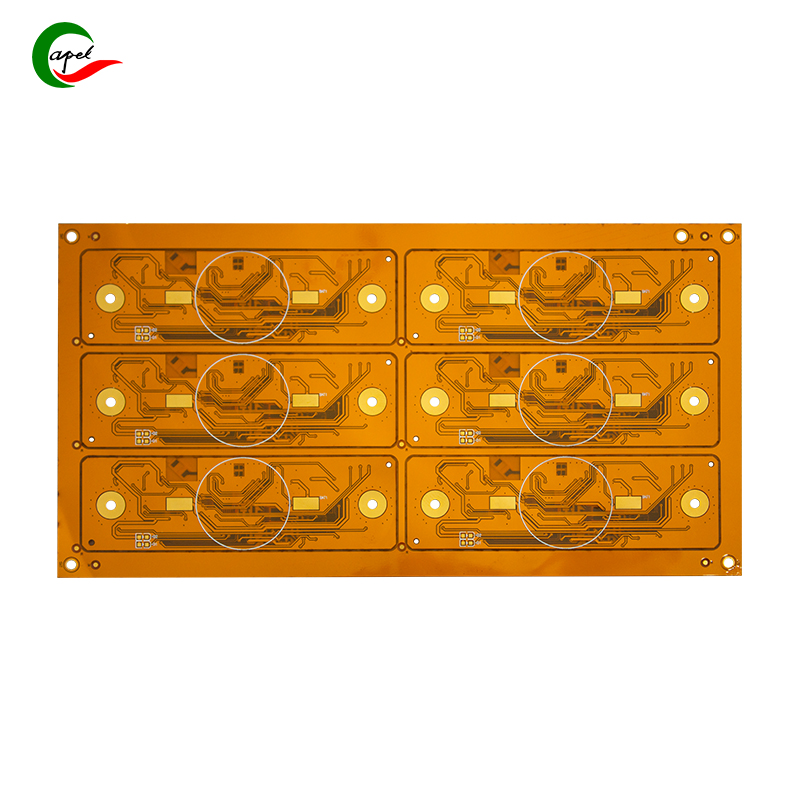Date: 2025-10-10
If you're designing with flexible PCBs, one of the first questions that comes up is: how many circuits can I actually run through this thing? The answer might surprise you - I've seen everything from simple 3-circuit designs in medical sensors to complex 100+ circuit arrangements in foldable phones.
What Do We Mean by "Circuits" Anyway?
In flexible PCB terms, we're talking about those thin copper traces that carry signals and power between components. Think of them like microscopic highways - each one needs its own lane with proper spacing to prevent "signal accidents" (what we call crosstalk).
The Three Real Constraints on Circuit Density
From my experience working with manufacturers, here are the actual limits you need to consider:
Size Matters, But It's Not Everything
I recently worked on a smart ring project where we had to fit everything in a 2mm × 3mm space. We managed 8 circuits, but it was tight - each trace was at the minimum 0.1mm width with equal spacing. On the other end of the spectrum, I've designed industrial sensor PCBs at 20mm × 30mm that comfortably handled 120 circuits.
The reality is that size gives you the canvas, but how you use it determines the actual circuit count.
Trace Geometry is Where the Magic Happens
Most consumer devices use 0.1mm traces with 0.1mm spacing - it's the sweet spot for cost and reliability. But when space is absolutely critical, we can push to 0.05mm traces and spacing. I remember a hearing aid project where this fine-pitch approach let us increase circuit density by 80%, though it added about 30% to the manufacturing cost.
There's a hard limit around 0.02mm - beyond that, the copper becomes too fragile for practical use, especially in dynamic flexing applications.
Layer Stacking: The Secret Weapon
This is where flexible PCBs really shine. A 2-layer flex board essentially doubles your circuit capacity without increasing footprint. I typically use 4-layer constructions for complex devices like foldable phones - it's surprising how many engineers don't realize that a well-designed 4-layer flex PCB can handle over 200 circuits in a relatively small space.
The catch? Each additional layer reduces flexibility. Most applications max out at 6 layers before the board becomes too stiff.
Real-World Examples from My Projects
Wireless Earbuds (The Compact Powerhouse)
In a recent earbud design, we used a 6mm × 8mm single-layer flex with 16 circuits. The breakdown was:
3 circuits for battery management
6 for audio signals (including noise cancellation)
4 for touch controls
3 for status LEDs and sensors
We could have added more, but that would have required moving to a 2-layer board, which wasn't necessary for this application.
Foldable Phone Hinge (The High-Density Challenge)
This was one of my most complex projects - we needed to route 4K display signals, camera data, and power through a 12mm × 25mm space. The solution was a 4-layer design with 94 circuits, using a mix of 0.1mm and 0.05mm traces. The key was careful layer planning to avoid interference between high-speed digital signals and power lines.
Practical Tips for Maximizing Circuit Density
Based on my experience, here's what actually works:
Know When to Go Fine-Pitch
I only specify 0.05mm traces when absolutely necessary. The yield rate drops significantly, and not all manufacturers can consistently achieve this level of precision. When I do need fine-pitch, I always work with suppliers who have laser direct imaging capabilities.
Layer Management is Crucial
Instead of trying to cram everything on one layer, I often use this approach:
Outer layers for critical signals
Inner layers for power and ground planes
This not only increases circuit density but also improves signal integrity.
Keep Noisy Circuits Separate
I learned this lesson early in my career - power circuits and sensitive analog signals don't play well together. I now always maintain at least 0.2mm separation between power and signal traces, and often use grounded guard traces between them for additional isolation.
Pushing the Limits: Theory vs Reality
In laboratory conditions, I've seen 300+ circuit flexible PCBs, but these are essentially engineering exercises. The materials become incredibly expensive, and the reliability suffers.
For actual production applications, I rarely design beyond 150 circuits. Beyond that point, you're usually better off using multiple flex circuits or considering alternative approaches.
The Bottom Line
The beauty of flexible PCBs is that they're surprisingly capable. For most applications, a well-designed 2 to 4 layer flex PCB will handle your circuit needs without compromise. The key is working with your manufacturer early in the design process to understand what's actually achievable with their capabilities and your budget constraints.
Remember, more circuits aren't always better - clean signals and reliable operation should always be the priority.
related link:
Capel manufacturing PCBs since 2009. Professional technology and high-precision Printed Circuit Boards involved in Medical, IOT, UAV, Aviation, Automotive, Aerospace, Industrial Control, Artificial Intelligence, Consumer Electronics etc..